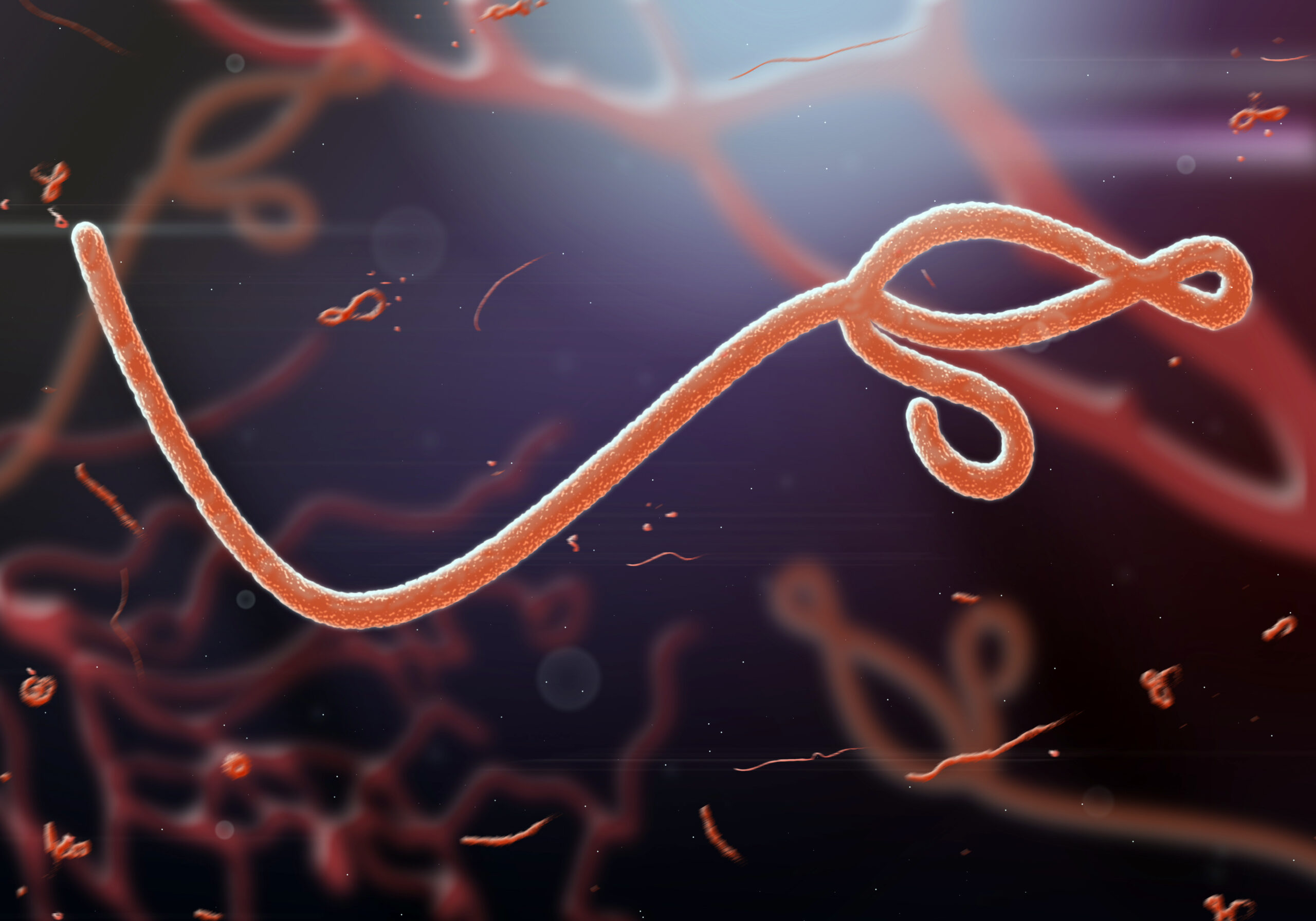The Ebola virus epidemic has continued to devastate Africa for nearly a decade due to its viral persistence—ability to linger on in survivors after recovery—and dangerous evolutionary behavior, which makes finding a cure a challenge for modern medicine. According to the World Health Organization, since the major outbreak during 2013-2016, three additional outbreaks have arisen in Africa. Last year, another outbreak in Guinea originated from an infected survivor five years ago. This opened up a question for researchers: where does Ebola hide in the body to allow for recrudescence, or the likelihood of recurring infections in survivors?
At the U.S. Army Medical Research Institute of Infectious Diseases (USAMRIID), Kevin Zeng Ph.D. leads the forefront in identifying the hiding place of Ebola on survivors that were previously treated with monoclonal antibody therapies (mAbs). mAbs are the standard treatment that use laboratory-made antibodies to prime the immune system and attack foreign pathogens.
Monoclonal Antibody Treatment
Image Source: Andriy Onufriyenko
To pathologically determine the cause for recrudescence, Zeng and his team used 36 symptom-free rhesus monkeys treated with mAbs. After a couple of days, the researchers found that 20% of monkeys showed persistent infection in the brain ventricular system, the region for cerebrospinal fluid circulation. Furthermore, two infected monkeys developed critical conditions and succumbed at days 30 and 39, respectively. In the autopsy, there was major inflammation and rampant infection in the brain ventricular system while no other body parts became infected.
Hiding Place of Ebola Virus–Brain Ventricular System
Image Source: bauhaus1000
As Zeng’s study shows, even with monoclonal antibody treatment, Ebola virus can lay dormant in the brain ventricular system and re-emerge to infect the person. Similarly, USAMRIID’s Jun Liu Ph.D. reported that Ebola may reactivate itself and induce disease relapse in survivors. Eventually, these survivors can transmit Ebola again and contribute to imminent outbreaks. Revisiting two cases where a British nurse suffered from meningoencephalitis (inflammation of tissue in brain) nine months after recovery and another patient who succumbed six months after mAbs treatment and caused widespread disease transmission, reinforces this conclusion.
Ultimately, these results underscore the importance of pushing for more effective therapeutic developments beyond vaccination and mAbs. Future studies should determine the efficacy of mAbs with antiviral treatment since the brain remains less accessible to mAbs. Therefore, a combination of mAbs with antiviral treatment may better decrease re-infection chances. An inspection of other body parts that could work as Ebola’s hiding place appears equally important for preventing relapses. Performing molecular studies analyzing the viral persistence of Ebola virus may also help. For patient care, the healthcare team should perform long-term follow-up checks with the survivors in an effort to permanently flatten the curve, eradicate recrudescence, and ultimately wipe off the stigma on global public health.
Featured Image Source: jaddingt










